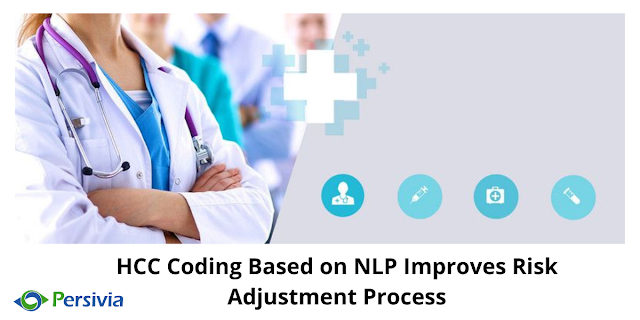HCC Coding Based on NLP Improves Risk Adjustment Process
Risk Adjustment (RA) is a quantitative technique that takes into account the underlying health problems and healthcare expenditures of health plan members when examining healthcare outcomes or spending. Risk Adjustment Solutions contribute to guaranteeing compliance and providing correct reimbursement for beneficiaries' risk expenses.
The COVID-19 pandemic imposed costs on the entire healthcare market,
notably the risk adjustment segment. The pandemic's turmoil has severe
consequences, including a drop in preventative activities, including certain
yearly medical and wellness appointments. Additionally, there have been some
advantageous outcomes, such as the rise in provider usage of telehealth.
Even though, the prior year demonstrated a distinct possibility of
being a year of enhanced risk adjustment activity. Consolidated Omnibus Budget
Reconciliation Act (COBRA) limitations and rates have been reduced, and some
have been eliminated, with the introduction of the American Rescue Plan Act of
2021. The bill reforms different healthcare insurance policies to expand
Medicaid discount criteria and strengthen government financial help for
insurance coverage, while also allowing the Affordable Care Act (ACA) to offer
an off-calendar second opportunity.
The Significance of HCC
Coding
As a large number of healthcare organizations have implemented value-based care, they are now searching for Risk Adjustment Solutions and advanced methodologies and approaches for detecting high-risk members/patients, as well as addressing gaps in HCC Coding and Centers for Medicare & Medicaid Services (CMS) payout.
Let's be honest, the success of a healthcare organization's risk
adjustment program is dependent on mistake-free datasets to guarantee that its
patients' risk scores appropriately represent their core health problems.
Employ integrated, end-to-end risk adjustment solutions to gather comprehensive
data with unparalleled precision and assist organizations in interpreting it to
help HCC Coding and close
gaps, enhancing outcomes for patients.
Cautionary notes for HCC Coding
Every year, risk adjustment scores are updated. Current diagnoses,
including chronic diseases, must be reported annually by practices.
All health conditions that overlap at the time of the visit or
have an impact on the patient's care should be coded since HCCs are cumulative.
It is not appropriate to code for conditions that have been
treated in the past but no longer exist. If the disease or family medical
history affects present care or influences therapy, history codes may be
utilized as secondary codes.
Power of NLP
NLP empowers providers and
care teams to take charge of their coding experience.
Health plans code with simplicity, speed, and accuracy to
significantly enhance risk adjustment outcomes.
NLP can process millions of health records and diagnostic document
files, producing super accurate insights with a higher success rate.




Comments
Post a Comment